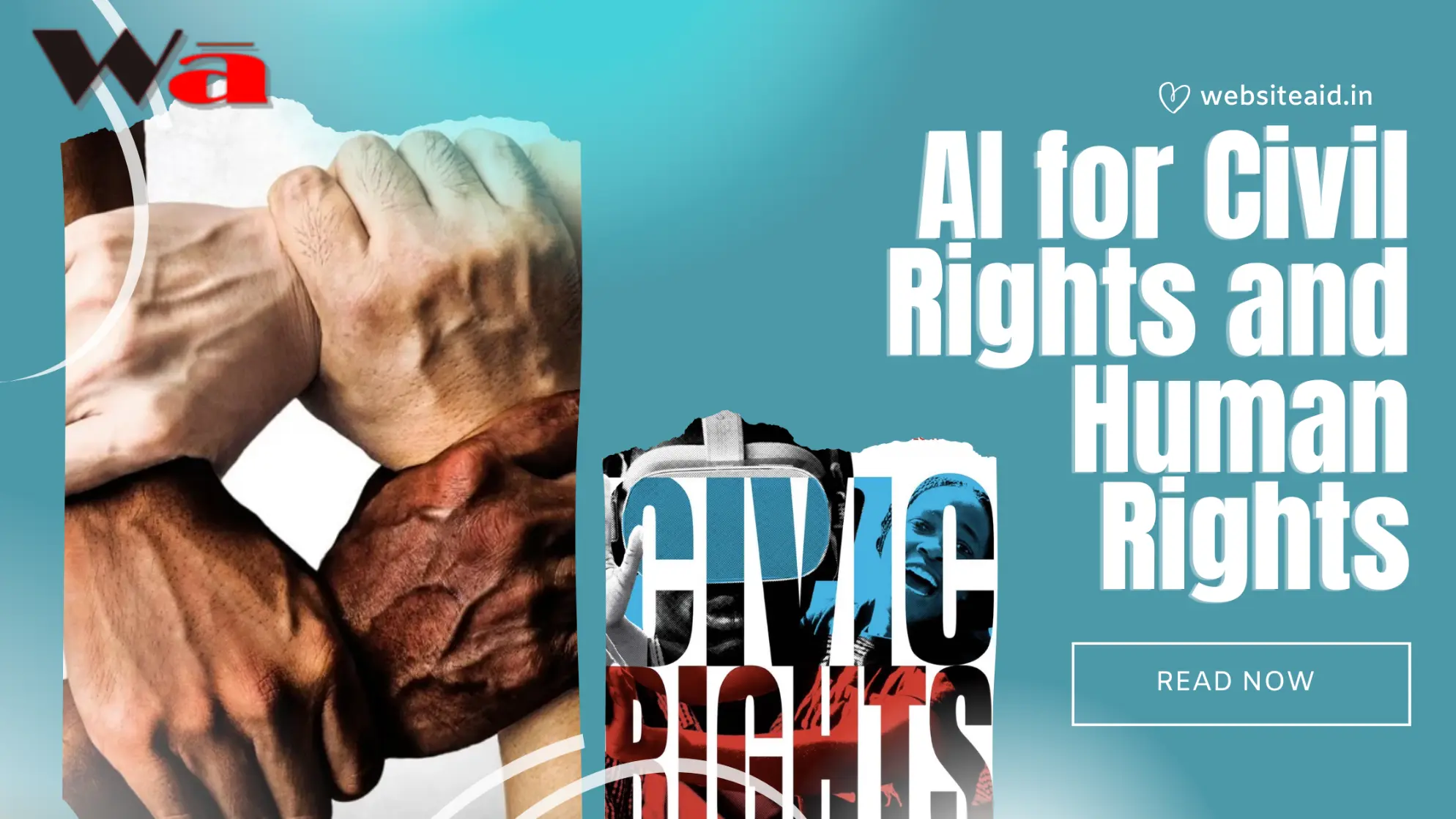Artificial Intelligence (AI) is like a modern wizard, weaving its magic into our lives, from self-driving cars to talkative chatbots. But here’s the twist: AI isn’t just a tech enchantment; it’s a powerful ally in the fight for civil and human rights.Let’s go into the world of artificial intelligence and see how it may protect the most important rights like a superhero.
1. The Guardian Angel: AI to Monitor Human Rights Abuses
Satellite Imagery Analysis:
Picture this: AI scanning satellite images like a superhero with X-ray vision. Initiatives like “Eyes on the Forest” and the “Sentinel Project” use AI to spot illegal activities, from deforestation to mass detentions.
Social Media Sidekick:
Meet the social media superhero. AI sifts through social media content, spotting patterns that scream human rights violations. Platforms like Ushahidi become the trusty sidekick, mapping abuses in real-time.
Drone Avenger:
Drones, armed with AI-powered object detection, become our vigilantes. They patrol remote areas, combating forced displacement and human trafficking routes. With ethical considerations, they could be the heroes in human rights monitoring.
2. The Anti-Hate Crusader: AI to Identify Hate Speech Online
Natural Language Processing (NLP):
AI, trained on the language of the internet, becomes the guardian against hate speech on platforms like Twitter and Facebook, making the online world safer.
Sentiment Analysis Ally: AI for Civil Rights and Human Rights
Analysing the vibes in online conversations, AI identifies harmful language, becoming the unsung hero in proactive moderation and combating the spread of hate ideologies.
AI for Civil Rights and Human Rights
Multimodal Defender
AI’s power goes beyond text. It analyzes audio and video, protecting vulnerable communities from hate speech in songs, videos, and live streams.
3. The Equalizer: AI to Track Discrimination in Various Sectors
Algorithmic Justice Warrior:
AI fights against biases in hiring, loan applications, and criminal justice systems, ensuring fairness and equality.
Disparity Detective:
In the labyrinth of large datasets, AI uncovers patterns of discrimination in healthcare, education, and housing, paving the way for policy changes towards a more just society.
Anonymous Reporting Partner:
AI-powered chatbots become trusted confidants, offering safe spaces to report discrimination. Anonymized data becomes the hero, revealing trends and holding institutions accountable.
4. Navigating the Maze: Challenges and Considerations
Bias Buster:
AI, like a superhero grappling with its flaws, must tackle biases perpetuated by biased data through meticulous curation and ethical audits.
Privacy and Data Security Guardian:
In the age of data, AI ensures privacy and security, erecting transparent frameworks to protect our digital lives.
Algorithmic Illuminator:
Understanding AI’s complex algorithms becomes crucial, requiring the adoption of explainable AI techniques to maintain accountability and trust.
5. The Grand Finale: Conclusion
In the grand finale, AI takes a bow as a potent tool for civil and human rights. With ethical frameworks, bias mitigation, and a human touch, AI becomes the partner in crafting a more just and equitable world. The secret lies in collaboration between tech wizards, policy architects, human rights champions, and the real heroes – the communities affected.
6. Beyond the Horizon: Further Research Adventures
Embark on a quest to explore AI’s potential in empowering marginalized communities. Imagine AI aiding language translation for indigenous groups or creating communication tools for those with disabilities. Join the adventure of AI in advocacy campaigns, where sentiment analysis identifies key supporters and personalized content raises awareness about specific human rights issues. Finally, set sail into the sea of international cooperation, ensuring AI’s responsible deployment for global human rights protection.
Remember, this is just the opening chapter. Go deeper into these stories, uncovering more ways AI for civil and human rights.
FAQ’s
- Is AI really effective in detecting human rights abuses? What are some success stories?
Ans: AI is a superhero in spotting human rights issues. Success stories include projects like “Eyes on the Forest” using AI to track illegal logging and the “Sentinel Project” identifying mass graves in conflict zones. - Can AI identify hate speech in languages other than English? How accurate is it?
Ans: Absolutely! AI, like a multilingual hero, can identify hate speech in various languages. Its accuracy is improving, ensuring a safer online space globally. - How can AI be used to combat discrimination in areas like healthcare or criminal justice?
Ans: AI acts as a vigilant guardian, scrutinizing algorithms for biases and analyzing large datasets to expose patterns of discrimination. This insight drives policy changes for a fairer society. - Could AI empower marginalized communities in the fight for their rights? If so, how?
Ans: Indeed! AI can aid language translation for indigenous groups, develop communication tools for people with disabilities, and serve as an ally in advocacy campaigns by identifying key supporters. - Isn’t AI itself biased? How can we ensure it doesn’t perpetuate existing inequalities?
Ans: Like any superhero, AI has flaws. To prevent biases, meticulous data curation and ethical audits are essential. It’s a constant battle to ensure fairness. - How can we protect people’s privacy when using AI for human rights monitoring?
Ans: AI becomes a privacy guardian by adopting transparent frameworks for data protection. It ensures that the superheroic actions don’t compromise personal privacy. - Who controls the data and algorithms used in these applications? Is there a risk of abuse?
Ans: The responsibility lies with a collective effort. Collaboration between tech wizards, policymakers, and human rights advocates ensures ethical use. Vigilance is crucial to prevent any misuse. - Who is responsible when AI makes a mistake and harms someone?
Ans: In the event of a mistake, the responsibility falls on those who deploy and oversee AI. Human oversight is paramount to rectify errors and prevent harm, ensuring accountability in the AI realm.


1 thought on “AI for Civil Rights and Human Rights: Navigating the Complex Landscape”
Pingback: Keep these phone privacy tips in mind - Website Aid